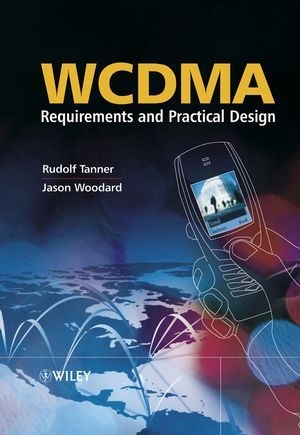Ulteriori informazioni
Informationen zum Autor Rudolf Tanner and Jason Woodard are the authors of WCDMA: Requirements and Practical Design, published by Wiley. Klappentext WCDMA (Wideband Code Division Multiple Access), an ITU standard derived from code division multiple access (CDMA) is officially known as IMT-2000 direct spread. WCDMA is a third generation mobile wireless technology offering much higher data speeds to mobile and portable wireless devices than commonly offered in today's market. WCDMA is a relatively new technology and there is little information in the public domain about specific design issues. The proposed book will discuss UMTS/WCDMA from the perspective of a potential development engineer, who may have experience of GSM but none of WCDMA technology. The book will outline the design specifications and potential problems and solutions faced by by an engineer designing a mobile device such as a handset.WCDMA: Requirements and Practical Design:* Offers in-depth coverage of the critical issues in designing a UMTS handset modem.* Discusses the practical design elements of a UMTS modem.* Authored by leaders in their field, working at Ubinetics.Highly relevant to professional software engineers, Design engineers, Electrical engineers (RF base-band, DSP software, protocol software), technical managers, postgraduate students and academics. Zusammenfassung WCDMA (Wideband Code Division Multiple Access), an ITU standard derived from code division multiple access (CDMA) is officially known as IMT-2000 direct spread. WCDMA is a third generation mobile wireless technology offering much higher data speeds to mobile and portable wireless devices than commonly offered in today's market. WCDMA is a relatively new technology and there is little information in the public domain about specific design issues. The proposed book will discuss UMTS/WCDMA from the perspective of a potential development engineer, who may have experience of GSM but none of WCDMA technology. The book will outline the design specifications and potential problems and solutions faced by by an engineer designing a mobile device such as a handset.WCDMA: Requirements and Practical Design:* Offers in-depth coverage of the critical issues in designing a UMTS handset modem.* Discusses the practical design elements of a UMTS modem.* Authored by leaders in their field, working at Ubinetics.Highly relevant to professional software engineers, Design engineers, Electrical engineers (RF base-band, DSP software, protocol software), technical managers, postgraduate students and academics. Inhaltsverzeichnis Preface xvii Acknowledgements xix Abbreviations xxi 1 Introduction 1 1.1 Evolution and Revolution of Mobile Telephony 1 1.2 The Third Generation Partnership Project 9 1.3 3GPP Terminology 13 1.4 The Journey of a Bit 14 1.5 Structure of the Book 18 2 RF and Baseband Processing 19 2.1 Introduction 19 2.2 UMTS Radio Requirements 20 2.3 Receiver RF Design 25 2.4 Receiver Baseband Design 36 2.5 Transmitter Baseband Design 48 2.6 Transmitter RF Design 52 2.7 Future Trends 64 3 Physical Layer Chip Rate Processing 67 3.1 Introduction 67 3.2 Spreading and Scrambling 70 3.3 Physical Channels 75 3.4 The Receiver 84 3.5 Cell Search 95 3.6 Power Control 98 3.7 Handover 101 3.8 Transmit Diversity in the Downlink 104 3.9 Physical Layer Procedures 107 3.10 Measurements 109 3.11 Compressed Mode 112 4 Physical Layer Bit Rate Processing 123 4.1 Introduction 123 4.2 Transport Channels, Formats and Combinations 124 4.3 Overview of the Bit Rate Processing Chain 129 4.4 Rate Matching 142 4.5 Convolutional Encoding and Decoding 153 4.6 Turbo Encoding and Decoding 167 4.7 TFC Detection 188 4.8 Compressed...

